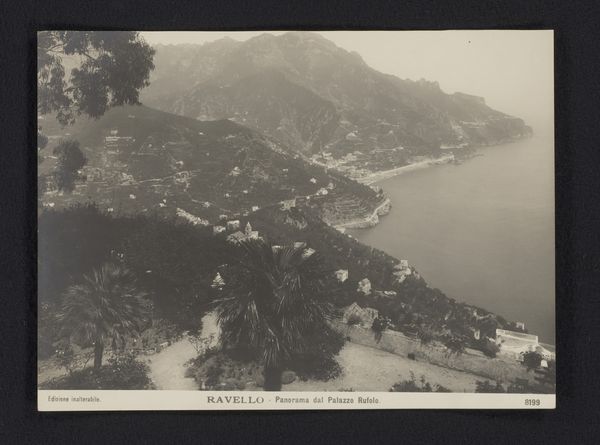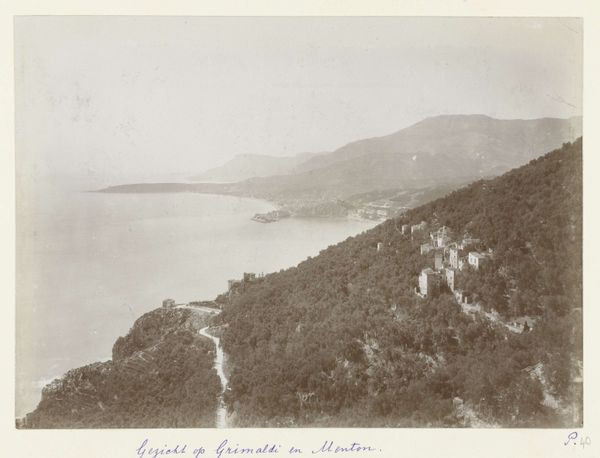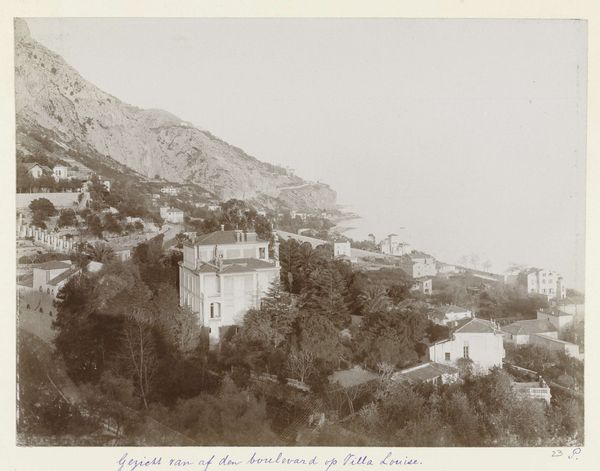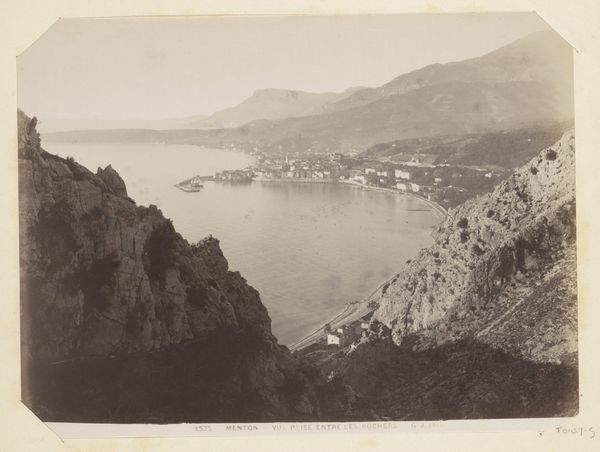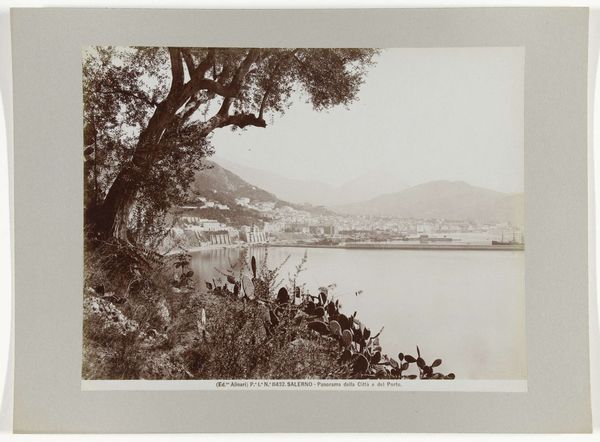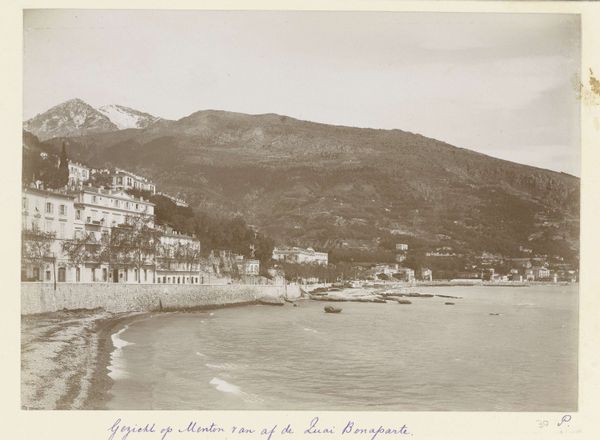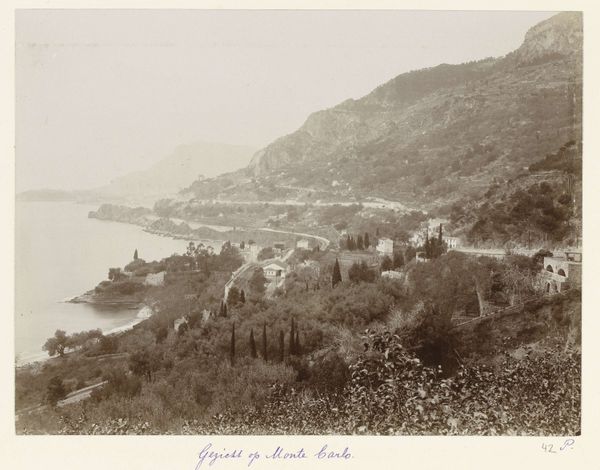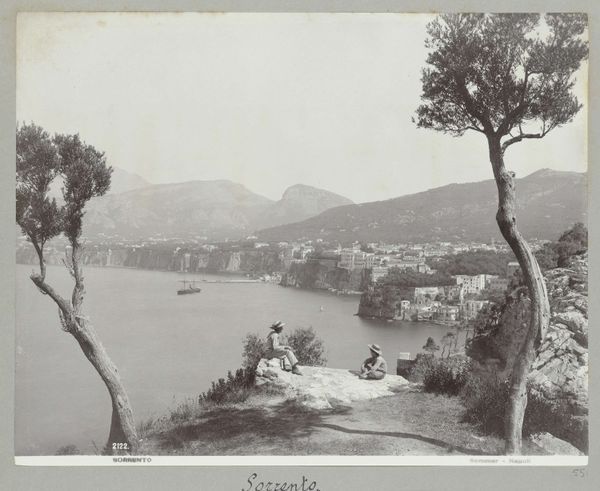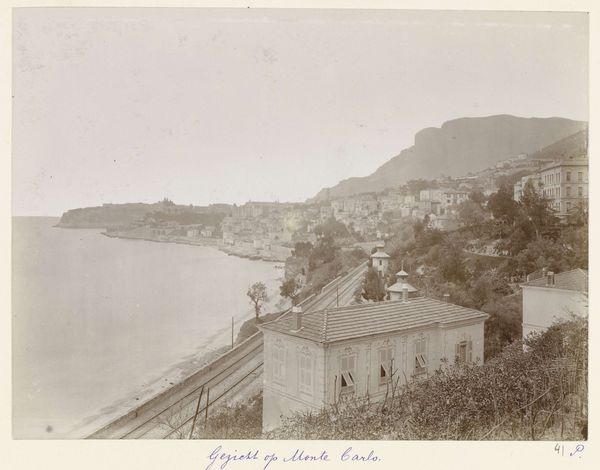
Gezicht op Menton gezien vanaf de Italiaanse grens c. 1886 - 1896
0:00
0:00
photography, albumen-print
#
pictorialism
#
landscape
#
nature
#
photography
#
cityscape
#
albumen-print
#
realism
Dimensions: height 164 mm, width 222 mm, height 322 mm, width 498 mm
Copyright: Rijks Museum: Open Domain
Editor: This is “View of Menton Seen from the Italian Border,” an albumen print from sometime between 1886 and 1896 by Henry Pauw van Wieldrecht. The monochromatic tones create a wistful feeling. It makes me think about travel, the Grand Tour, and wealthy tourists discovering 'picturesque' locations. How would you interpret the piece? Curator: It's interesting you mention the Grand Tour. Consider the rise of photography during this period and how it democratized access to these scenic views. The *albumen print* process itself, a relatively new technology, played a crucial role. Do you think that accessibility impacts the artistic value, and moreover, who and what benefits from this kind of visual tourism? Editor: That's a great point, I never thought of it that way! Does the composition or content also relate to any kind of…social narrative of the time? Curator: Absolutely. The railway cutting through the landscape suggests modernization, but the composition also frames nature as something to be consumed, a commodity. Also consider how the perspective of wealthy westerners determined what was valuable and worth depicting. What would this image signify, if it was photographed from another point of view or cultural context? Editor: So, this photograph isn't just a landscape. It speaks volumes about how travel, photography, and economic power intersected. Curator: Precisely. Think of the image as an agent in a bigger discourse. Now, how do institutions like museums influence or reflect these past socio-economic factors of photographic creation? Editor: That makes me look at not only this photograph differently, but also the responsibility museums and galleries have to present it with a critical and wider contextual awareness. Thank you! Curator: You're most welcome. Understanding this helps us better see both the past and the present, and how art reflects and shapes culture.
Comments
No comments
Be the first to comment and join the conversation on the ultimate creative platform.
